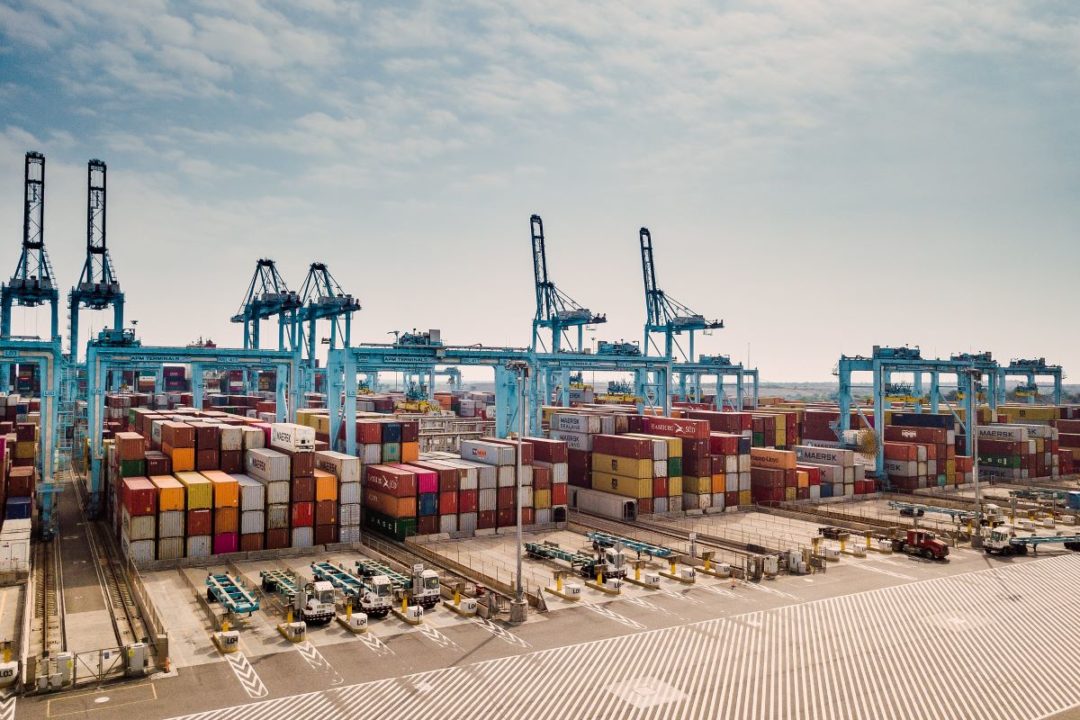
Think Tank
Latin America’s Prospects for Trade and Logistics Development

Port of Lázaro Cárdenas, Mexico. Photo: APM Terminals
Like all major regions of the world, Latin America is struggling to emerge from the shadow of the pandemic. But according to one official with the Inter-American Development Bank (IDB), its long-term prospects for trade and logistics development are strong.
The future of Latin American nations varies widely, of course, bound up in geography, history, political systems and general economic conditions. Some are chronically impoverished, ruled by a series of authoritarian governments or racked by triple-digit inflation. Others are economically stable or growing. An accurate portrait of the region must take into account these individual differences.
Topping the list of most promising countries for trade and logistics development is Mexico, according to Jaime Granados. He heads up the Trade and Investment Division of IDB’s Integration and Trade Sector, and has served as coordinator of the bank’s trade and integration hub for Central America, Mexico and the Dominican Republic. Granados says Mexico is especially attractive as a source of investment and growth due to its low labor cost, existing industrial base, political stability and participation in international trade pacts, including the United States-Mexico-Canada Agreement (USMCA).
In recent months, Mexico has been the source of heightened attention as U.S. manufacturers look to shift some production away from China and other parts of Asia. The move to near-shoring is in response to rising Chinese factory wages, persistent trade tensions between China and the U.S., and a desire to lessen the risk of supply chain disruptions by diversifying sourcing and producing goods closer to end markets. And given Mexico’s existing infrastructure of maquiladoras — companies that can manufacture and export goods to the U.S. duty-free — the shift is relatively easy to achieve.
Mexico has ambitious plans to expand its transportation and distribution infrastructure, including the overhaul of two major ports, improvements to the rails and creation of 10 industrial development zones. Included on the agenda is further expansion of the Port of Lázaro Cárdenas, Mexico’s largest seaport. But aspirations alone won’t attract more international business. “Mexico has to deliver on these projects,” Granados says.
Mexico is far from Latin America’s only prospective success story. Granados cites Costa Rica and the Dominican Republic as additional areas of future promise. The latter acts as a logistics hub for IKEA, distributing product to the U.S., Caribbean and throughout South America. A modern network of ports and highways, as well as proximity to the Panama Canal, offer benefits that offset the logistical disadvantages of an island nation.
Multilateral trade agreements could serve as an engine of further development. USMCA is likely to be the biggest generator of growth for Mexico for years to come, given its long history and origins in the North American Free Trade Agreement (NAFTA). Then there’s Mercosur, covering Argentina, Brazil, Paraguay and Uruguay (with a fifth member, Venezuela, suspended since the end of 2016 for failing to adhere to democratic principles). That group’s prospects are less clear at the moment, given tensions between the four full members and the difficulties of hammering out a final trade deal with the European Union. “It’s taking a lot of time to refine and define the legal text,” Granados says. “I’m not sure when there’s going to be a trade agreement in place.”
Similar questions attend efforts to unite Caribbean nations in a single trading bloc. The Caribbean Basin Trade Partnership Act (CBTPA) grants duty-free access to the U.S. market to Barbados, Belize, Curaçao, Haiti, Jamaica, Saint Lucia, and Trinidad and Tobago. The region’s nations also maintain trade agreements between themselves and with the EU and Central America, but such efforts “are slowing down a bit,” says Granados. “They don’t show the same dynamism as trade agreements between other regional countries and the U.S.” Logistics costs remain a concern, and progress is hampered by changing administrations and differences among governments on how to move forward.
As for particular industries that stand to benefit most from regional trade and logistics development, Latin American countries are closely following the demands of U.S. markets, Granados says. That means developing capacity for microchips, renewable energy sources, pharmaceuticals, medical devices, textiles, automobiles and batteries, among other categories. In addition, knowledge-based and professional services could prove to be a continuing mainstay for the economies of Uruguay, Chile, Colombia, Costa Rica, Mexico and Brazil.
Of particular promise is the Alliance for Development in Democracy, launched in 2021 by the presidents of Panama, Costa Rica and the Dominican Republic. Among the group’s priorities, Granados says, is integrating supply chains with companies in the U.S.
None of these changes will happen overnight. Any major infrastructure project is likely to take at least five years to complete, with success predicated on both government and private-sector financing. Still, trade is expected to be key to economic growth throughout Latin America for years come.
Granados remains optimistic that the vision will be realized. “While it’s not going to save everybody from economic difficulties,” he says, “it could be part of an effort to take advantage of current opportunities.”




